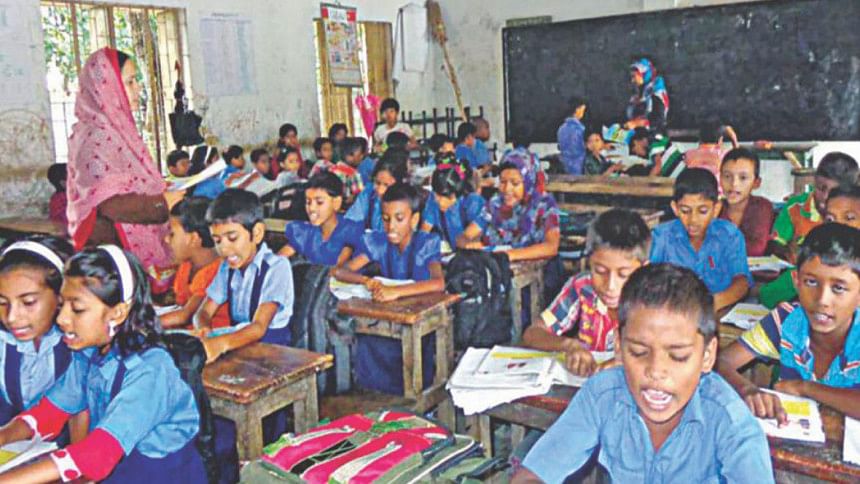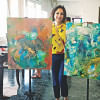Positive policies helping Bangladesh move towards inclusion in education: UNESCO

Bangladesh has taken many positive initiatives towards inclusion in education but needs to do more in removing remaining barriers, says a new global report.
"Policy makers should look closer at remaining main barriers standing in the way of inclusion, particularly for child brides and refugees. Education for all should mean all, without exception," Manos Antoninis, director of the Global Education Monitoring Report, told UNB.
Responding to a question on Bangladesh, Antoninis said many positive moves have been made towards inclusion in education in Bangladesh, particularly in regards to girls, those with disabilities, and those speaking minority languages.
"But real inclusion would cover all learners, no matter their identity, background and ability," said the director.
Laws in a quarter of all countries require children with disabilities to be educated in separate settings, rising to over 40 percent in Latin America and the Caribbean, as well as in Asia.
Bangladesh' law is more inclusive, according to the report.
Fewer than 10 percent of countries have laws that help ensure full inclusion in education, according to UNESCO's 2020 Global Education Monitoring Report: Inclusion and education – All means all.
No countries in Central and Southern Asia are among that 10 percent.
Bangladesh has a definition of inclusive education, but it does not cover all marginalised learners, according to the report. It covers inclusive education in its Education Sector Plan.
In Bangladesh, the 2010 National Education Policy recognised children's right to receive education in their mother tongue.
There are laws that are set out to exclude some learners:
Article 16 of the Convention on the Elimination of All Forms of Discrimination Against Women prohibits forced and child marriage, but 20 countries, including many with a high prevalence of child marriage, such as Bangladesh, have expressed reservations on thearticle.
Bangladesh's legal provision against child marriage is contradictory, as it punishes parents or guardians but does not declare such marriages void, the report reads.
EDUCATION FOR ROHINGYAS
Refugees such as the Rohingya in Bangladesh are taught in a parallel education system.
In January 2020, the government announced that, as of April 2020, 10,000 Rohingya children in grades 6 to 9 in camps would enrol in a pilot programme using the Myanmar curriculum.
While the decision goes some way to offer the Rohingya an education prospect, it violates the principle of inclusion of refugees in national education systems.
In Asia, displaced people, such as the Rohingya were taught in parallel education systems.
In OECD countries, more than two-thirds of students from immigrant backgrounds attended schools where they made up at least 50 percent of the student population, which reduced their chance of academic success.
"Covid-19 has given us a real opportunity to think afresh about our education systems," said Manos Antoninis, director of the Global Education Monitoring Report.
"But moving to a world that values and welcomes diversity won't happen overnight. There is an obvious tension between teaching all children under the same roof and creating an environment where students learn best. But, COVID-19 has showed us that there is scope to do things differently, if we put our minds to it."
Bangladesh's curriculum and textbook board reached only 963 of an estimated 40,000visually impaired children under 15 with Braille textbooks in 2016.
Curricula and textbooks can exclude as well: The share of females in secondary school English language textbook text and images was 37 percent in Bangladesh.
Teachers in Bangladesh reported a lack of both pre-and in-service opportunities for professional development on meeting the needs of students with disabilities, according to the report.
However, good efforts have been made to recruit a more diverse teaching body.
The government of Bangladesh, with donor support, recruited 650 primary school teachers with disabilities, about 70 percent of them women.
A few positive policies are underlined as helping Bangladesh move towards inclusion.
A large-scale female secondary school stipend programme introduced in Bangladesh in 1994 increased attainment by 14percent to 25 percent, delayed marriage, reduced number of offspring and improved decision-making autonomy.

 For all latest news, follow The Daily Star's Google News channel.
For all latest news, follow The Daily Star's Google News channel. 








Comments